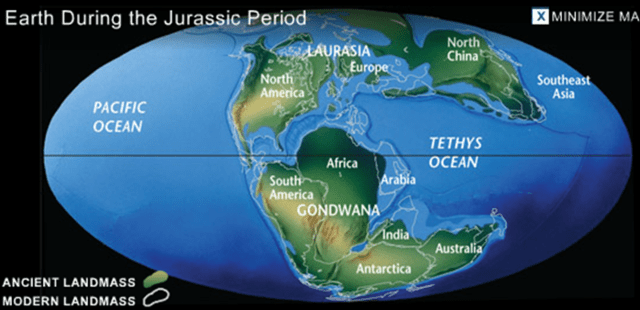Era vs Period
The distinction between era and period lies in the time concerned. Earth may appear young to us, and indeed, it is relatively new compared to other celestial formations. However, when studying or classifying events that occurred long ago, it is impossible to talk in terms of a specific year. When scientists are unsure of the precise time of an event, it is preferable to discuss a section of the time scale. The geological time scale is divided into categories, with the largest being super eons. Super eons are comprised of eons, which contain eras, which in turn contain smaller periods, epochs, and ages. This indicates that an era is a larger section of time than a period.
The division of the total time elapsed since Earth’s formation into different sections of time helps scientists and geologists understand and explain the sequence of events that may have occurred on Earth. With specific names given to different time periods ranging from the smallest to the largest, geologists can pinpoint particular events with greater precision. Otherwise, there would be no way to determine the specific year of an event’s occurrence, as one year is a very short, almost insignificant time period compared to the larger sections that have been classified under the geological time scale system.
Key Takeaways
- A period is the basic unit of time in the geological time scale, allowing geologists to discuss events that occurred long ago without specific dates or years.
- An era is a larger block of time, consisting of two or more periods.
- In the geological time scale, a year is too short and insignificant, so geologists and scientists use periods and eras to discuss past events.
What is a Period?
A period is considered the basic unit of time in the geological time scale, unless there is a specific need for smaller time periods. When scientists do not have precise dates or years, they can conveniently talk in terms of periods. A period is an interval of time that allows geologists to discuss events that took place long ago.
For those interested in dinosaurs, you may have heard of different periods such as Cretaceous, Jurassic, and Triassic. These are all periods in history that belong to the time when dinosaurs existed in the world. Each period contains several million years. This period time scale is used for these times because historians do not have a specific time period like an exact date. It also helps to include the entire time in which a certain variety of species existed on Earth.
What is an Era?
An era is a larger block of time that includes two or more periods. Two or more eras taken together make an eon, and there are also larger groupings of time called super eons. The Cretaceous, Jurassic, and Triassic periods mentioned earlier, when taken together, are known as the Mesozoic era.
Historians also use periods and eras when recording events. For example, in the Western world, the most important time divisions are BC and AD to demarcate the birth and death of Jesus Christ. In the Indian context, it is Emperor Akbar’s period or the British period. In the Chinese context, historians talk about ages or periods of different dynasties. We have the Roman era, the Victorian era, the Cold War era, the black and white era, and so on.
What is the difference between Era and Period?
In the geological time scale, a year is far too short and insignificant for discussing past events. Therefore, geologists and scientists use periods and eras as units of time.
- Length: A period is the most basic unit of time, while an era is longer than a period.
- Connection: An era consists of two or more periods.
- Usage by Historians: Historians talk of periods when they cannot have specific dates, and use eras to refer to the rule of an emperor or king with specific beginnings and endings.
